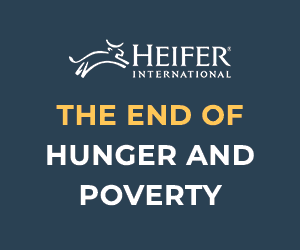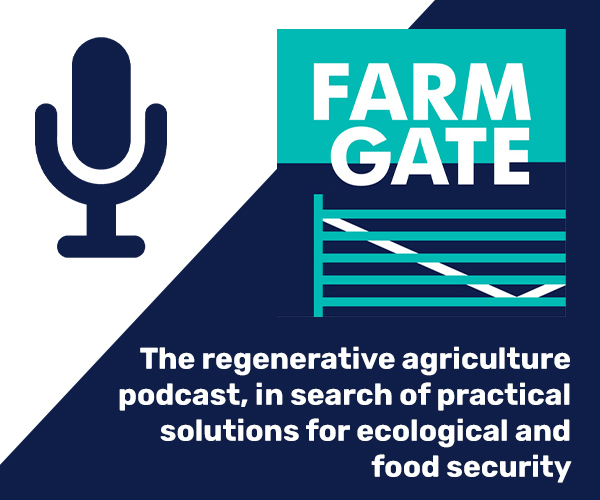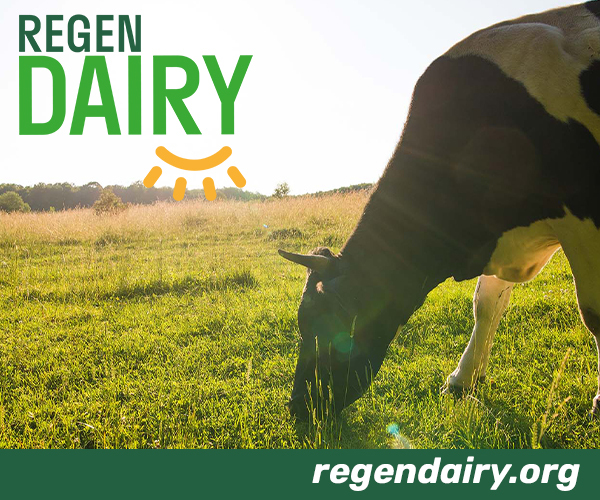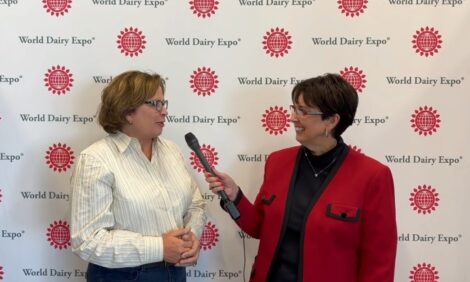



Weekly global protein digest: USDA raises all-milk price forecasts for 2022 and 2023
Analyst Jim Wyckoff shares an update on the US futures market, USDA reports and global protein newsWeekly USDA beef, pork export sales
Beef: US net sales of 16,600 MT for 2022 primarily for South Korea (7,100 MT, including decreases of 600 MT), Japan (3,600 MT, including decreases of 300 MT), China (2,000 MT, including decreases of 100 MT), Mexico (1,600 MT, including decreases of 100 MT), and Canada (800 MT, including decreases of 100 MT), were offset by reductions for Colombia (100 MT). Net sales of 2,800 MT for 2023 were primarily for Japan (1,600 MT). Exports of 17,600 MT were primarily to South Korea (4,400 MT), Japan (4,000 MT), China (3,900 MT), Mexico (1,400 MT), and Canada (1,000 MT).
Pork: US net sales of 40,800 MT for 2022 were primarily for Mexico (14,800 MT, including decreases of 300 MT), Japan (11,000 MT, including decreases of 200 MT), Australia (3,500 MT), Canada (3,100 MT, including decreases of 400 MT), and China (3,000 MT, including decreases of 100 MT). Exports of 28,400 MT were primarily to Mexico (13,700 MT), China (4,100 MT), Canada (2,100 MT), Japan (2,100 MT), and South Korea (2,000 MT).
China encourages farmers to sell more pigs
China’s state planner has increased its coordination with large-scale hog farms to ensure stable supplies, as it tries to cool soaring prices in the world’s largest pork market. China’s largest hog producers have agreed to “undertake social responsibilities,” said the National Development and Reform Commission (NDRC) said. The companies will take the lead in ensuring supply and price stability in the market, release fattened hogs in a timely manner and speed up the slaughter pace when necessary, it added. Beijing has already issued several warnings to farmers urging them to stop holding back hogs from slaughter to wait for higher prices.
China to sell more pork stocks
China will sell another 20,000 MT amount of pork from state-owned reserves on Oct. 21 – the sixth batch of pork released from state stockpiles. The National Development and Reform Commission said it would work on securing hog supplies and stabilizing prices, and continue to release pork reserves.
Chinese hog producers looking at alternatives to soymeal amid shortages, high prices
Shipping delays from the U.S. due to low water levels on the Mississippi River will further tighten Chinese soybean supplies and push soymeal prices higher. As a result, Chinese hog producers are looking for alternative protein sources. Cash soymeal prices in Dongguan, Guangdong province climbed to an all-time high of 5,680 yuan ($789) per metric ton last week, compared with 3,500 yuan ($486) at this time last year. China’s soybean imports are likely to fall to their lowest in more than two years this month, having dropped in September and August.
U.S. nears record poultry deaths from bird flu; Europe hit hard too
More than 47 million birds in the U.S. have died due to avian influenza and related cullings, just behind the record 50.5 million birds that died in 2015, the deadliest U.S. outbreak. The outbreak has infected flocks in 42 states since February, twice as many as in 2015, USDA records show. Nearly 50 million birds also have been culled in Europe, which is suffering from an outbreak of the same subtype of the H5N1 strain of the virus known as the goose/Guangdong lineage. Officials are finding the subtype in a broader range of wild birds, such as ducks, than in the past and it seems to live in the birds longer, Rosemary Sifford, chief veterinary officer at USDA told Reuters. “This virus could be present in wild birds for the foreseeable future,” Sifford said. “This one is certainly different.”
USDA’s livestock, dairy and poultry outlook
Domestic use of broilers and pork forecast to Increase while beef supply falls. Total domestic use is calculated by subtracting exports and ending stocks from total supply (beginning stocks, imports, and production). These calculations can be found on an annual basis on page 32 of the USDA’s World Agricultural Supply and Demand Estimates report. Domestic use of beef is forecast to increase very slightly in 2022 but to decline sharply in 2023 as the U.S. cattle herd shrinks, a result of drought and high feed costs. Pork use is on the rise in 2022 as imports increase and exports fall, though production isn’t forecast to grow. In 2023, pork use is forecast to increase due to increased production and imports, and declining exports. Use of broiler meat is projected to rise significantly in 2022, as production and imports climb and exports decline compared to 2021. Broiler use is expected to increase again in 2023, but by a smaller margin. Turkey meat is on the decline in 2022 as the Highly Pathogenic Avian Influenza (HPAI) outbreak has had an outsize impact on the industry. However, it is forecast to bounce back in 2023.
Beef/Cattle: Drought continues to have a role in the timing of cattle slaughter. Based on stronger expected pace of fed cattle and beef cow slaughter in late 2022, the production forecast for this year is fractionally higher than last month. The 2023 beef production outlook is raised on greater expected marketings in early 2023 as more calves are expected to be placed in feedlots in second-half 2022. The cattle price forecast for fourth-quarter 2022 is adjusted higher, mainly on current price strength and a stronger anticipated pace of fed cattle slaughter. Calf prices are lowered for 2022 as feed prices are projected higher. Record exports in August were above expectations, raising the 2022 forecast. The outlook for 2023 exports is increased on stronger expected demand from Asia. The 2022 outlook for imports is lowered on third quarter data, but the 2023 forecast is raised on larger available supplies from Brazil and Australia than were expected last month.
Dairy: The all-milk price forecasts for 2022 and 2023 have been raised due to recent changes in dairy product prices and higher expected dairy exports. The all-milk price forecast for 2022 is $25.60 per hundredweight (cwt), $0.15 higher than last month’s forecast. The all-milk price forecast for 2023 is $22.90 per cwt, $0.20 higher than the September forecast. Milk production forecasts for both 2022 and 2023 have been raised, based on higher expected milk cow numbers and higher yield per cow. Export forecasts have been mostly raised, mainly due to anticipated strong demand from the international market and competitive domestic prices.
Sheep/Lamb: Lamb prices have declined in 2022. The lamb price in the third quarter of 2022 was 34.1 percent lower than the second-quarter price. Lamb price forecasts were lowered by 30 dollars per hundredweight for the fourth quarter of 2022 and for 2023.
Pork/Hogs: Based on information in the September Quarterly Hogs and Pigs, pork production for 2023 is reduced to 27.3 billion pounds, 0.7 percent greater than the production forecast for 2022. Hog prices in 2023 are expected to average $66.75 per cwt, about 6 percent lower than prices forecast for 2022. The forecast for total 2023 U.S. pork exports is reduced to 6.28 billion pounds, 1.7 percent lower than exports forecast for 2022.
Poultry/Eggs: Broiler production forecasts are adjusted up on strong production and hatchery data. Forecast broiler exports are unchanged, while imports are increased on recent trends. Broiler price forecasts are adjusted down on increased production expectations. Following the Highly Pathogenic Avian Influenza (HPAI) September detections, table-egg production forecasts for the remainder of 2022 and 2023 are revised downward. In addition, based on stronger-than-expected prices in third quarter, wholesale egg (New York, grade A, large) price forecasts are adjusted up. Based on recent trade data, egg and egg products import and export forecasts are adjusted slightly higher. Forecast turkey production is lowered for the remainder of 2022 and the first half of 2023, reflecting new outbreaks of HPAI. Turkey exports are adjusted slightly lower in 2022 and slightly higher in 2023, while imports are adjusted up in both years. Turkey prices are adjusted up on recent trends and lowered production expectations.
Weekly USDA dairy report
CME GROUP CASH MARKETS (10/14) BUTTER: Grade AA closed at $3.1750. The weekly average for Grade AA is $3.1920 (-0.0305). CHEESE: Barrels closed at $2.1250 and 40# blocks at $2.0500. The weekly average for barrels is $2.1830 (-0.0440) and blocks, $2.0455 (+0.0305). NONFAT DRY MILK: Grade A closed at $1.4900. The weekly average for Grade A is $1.5150 (-0.0245). DRY WHEY: Extra grade dry whey closed at $0.4425. The weekly average for dry whey is $0.4240 (-0.0020).
CHEESE HIGHLIGHTS: Milk volumes are available for cheesemaking in the Northeast and West. In the Midwest, contacts reported some discounts, but most spot milk sales were at or above Class III prices. Cheese makers are running busy production schedules across all regions, though some plant managers in the Northeast and West say labor shortages and supply chain delays are preventing them from running full schedules. Retail demand is softening in the Northeast and West, but contacts say food service demand is steady. Meanwhile, demand is well rounded in the Midwest. Export demand for cheese is strong in both the Northeast and West. In the Midwest, some cheesemakers say their production is just enough to keep up with existing contracts and orders, therefore they are turning down any additional orders. Meanwhile in the Northeast, spot purchasers say loads of cheese are available for purchasing. Cheese blocks remain available in the West, though contacts report barrel inventories are tighter and harder to find. Some Midwest contacts are concerned with how long cheese barrels have remained priced above blocks on the CME, but this is not currently having a negative effect on market tones.
BUTTER HIGHLIGHTS: Cream is becoming more available across all regions. Contacts in the Northeast and West say demand for cream from ice cream makers is lessening, though other Class II makers are utilizing increased cream volumes. In the Midwest, butter churning is increasing. Stakeholders in the West say butter makers are actively producing, though some facilities are closed for regularly scheduled maintenance. Some butter makers in the Northeast are using their cream internally, while others say they are selling cream loads in lieu of churning. Demand for butter is strong in the Central region and from bulk butter purchasers in the West. Stakeholders say retail and food service sales, in the West, are steady. Market sentiments are mixed in the Northeast. Some in the region anticipate a decline in retail butter demand in the coming weeks. Meanwhile, others say strong holiday butter demand may remain unmet due to limited churning and tight butter inventories. Butter availability varies in the Central region. In the West, tight butter inventories persist, and some spot purchasers say loads of unsalted butter are unavailable.
FLUID MILK: As autumn brings cooler temperatures, farm milk output is starting to grow. Bottlers and end users say they are beginning to notice a tangible difference in milk access from week to week. Bottling demand is picking up, as grocers prep for the upcoming busy season. Class III milk demand is mixed. Midwestern cheesemakers reported an increase in prices after last week’s $2 discounts. This week, spot milk prices ranged from $1 under to $.25 over Class III. Current condensed skim availability is mixed, as well, but expected to grow alongside milk production. Cream availability is growing, as well. Plants in the hurricane effected areas are now back online, and despite the potentiality of cream displacement, loads have actually become more accessible for end users throughout the rest of the nation. F.O.B. cream multiples are 1.34-1.45 in the East, 1.23-1.32 in the Midwest, and 1.09-1.34 in the West.
DRY PRODUCTS: Low/medium heat nonfat dry milk prices were mixed in all regions. Domestic customers are hesitant to take on extra loads in the final quarter of the year, while Mexican demand is noted as sporadic. Dry buttermilk prices moved lower in all market regions. Dry buttermilk demand is tepid, and producers say they are lowering prices in order to entice demand. Dry whole milk prices were unchanged on quiet spot market activity. Dry whey prices across the regions were steady to lower. Whey powder inventories are available, but demand is mixed. Whey protein concentrate 34% prices were steady to mixed, as markets differ from interchangeably used loads versus brand-preferred and specific end usage requirement quantities. Lactose market tones are stable, as prices were steady to higher. Casein market tones are a little less certain, as prices for acid casein dropped below $7, while rennet casein prices were unmoved.
International dairy market news
EUROPE/WESTERN EUROPE: Although European milk production is nearing the seasonal nadir for the year, some regions have had positive weekly milk delivery growth. Milk deliveries in parts of Germany continue to fluctuate with shifts in the weather, but weekly deliveries in France have been slightly above those of the previous year. In addition, September milk deliveries in Great Britain are thought to be above last year levels. While the availability of milk and dairy supplies has improved in the last few months, the European Commission's Department for Agriculture and Rural Development expects the 2022 annual EU milk collection will still be approximately 0.5 percent lower than the 2021 milk collection. The hot and dry summer weather hindered forage and crop development, leaving farmers with limited feed supplies for the summer and the coming winter months.
EASTERN EUROPE: Milk production continues along seasonal declines in Eastern Europe. While much of Europe coped with summer heat and drought, the weather impacts were less extreme in parts of Eastern Europe. Market observers note that Poland, may have positive milk growth for the year. The European Commission's Department of Agriculture and Rural Development projects 2022 annual milk collections in Poland to be about 2 percent higher than in 2021. United Nations officials are working with Ukraine and Russia to try to extend and expand the Black Sea grain export deal. NATIONAL RETAIL REPORT: Total conventional dairy ads declined by 6 percent and organic dairy ads declined by 32 percent this week. Despite listing 14 percent fewer ads this period, conventional ice cream in 48–64-ounce container is the most advertised dairy commodity. Total conventional cheese advertisements shrunk 23 percent. Conventional yogurt ads increased 26 percent and, organic yogurt ads declined 50 percent. Total conventional milk ads grew 1 percent this week, while organic milk ads increased by 17 percent.
OCTOBER 2022 SUPPLY AND DEMAND (USDA WASDE): The milk production forecasts for 2022 and 2023 are raised from last month. The cow inventory is raised reflecting a more rapid pace of expansion in late 2022 and the first half of 2023. Output-per-cow is raised for the remainder of 2022 and into the first part of 2023. For 2022, forecasts for butter and cheese prices are raised on current price strength, but nonfat dry milk (NDM) and whey prices are lowered. Both Class III and Class IV prices are raised, reflecting the higher butter and cheese prices respectively. The 2022 all milk price forecast is raised to $25.60 per cwt and the 2023 all milk price is raised to $22.90 per cwt.












